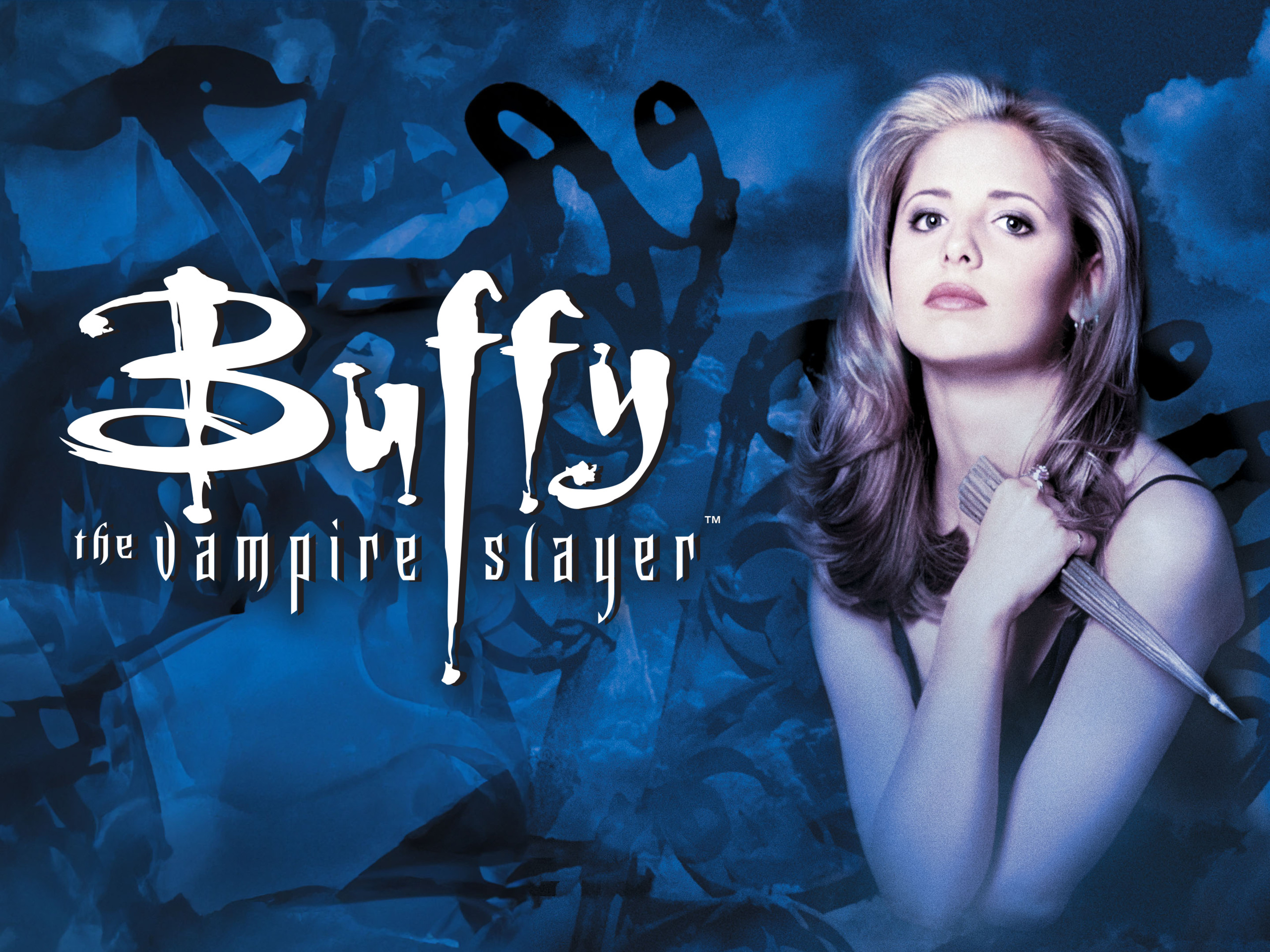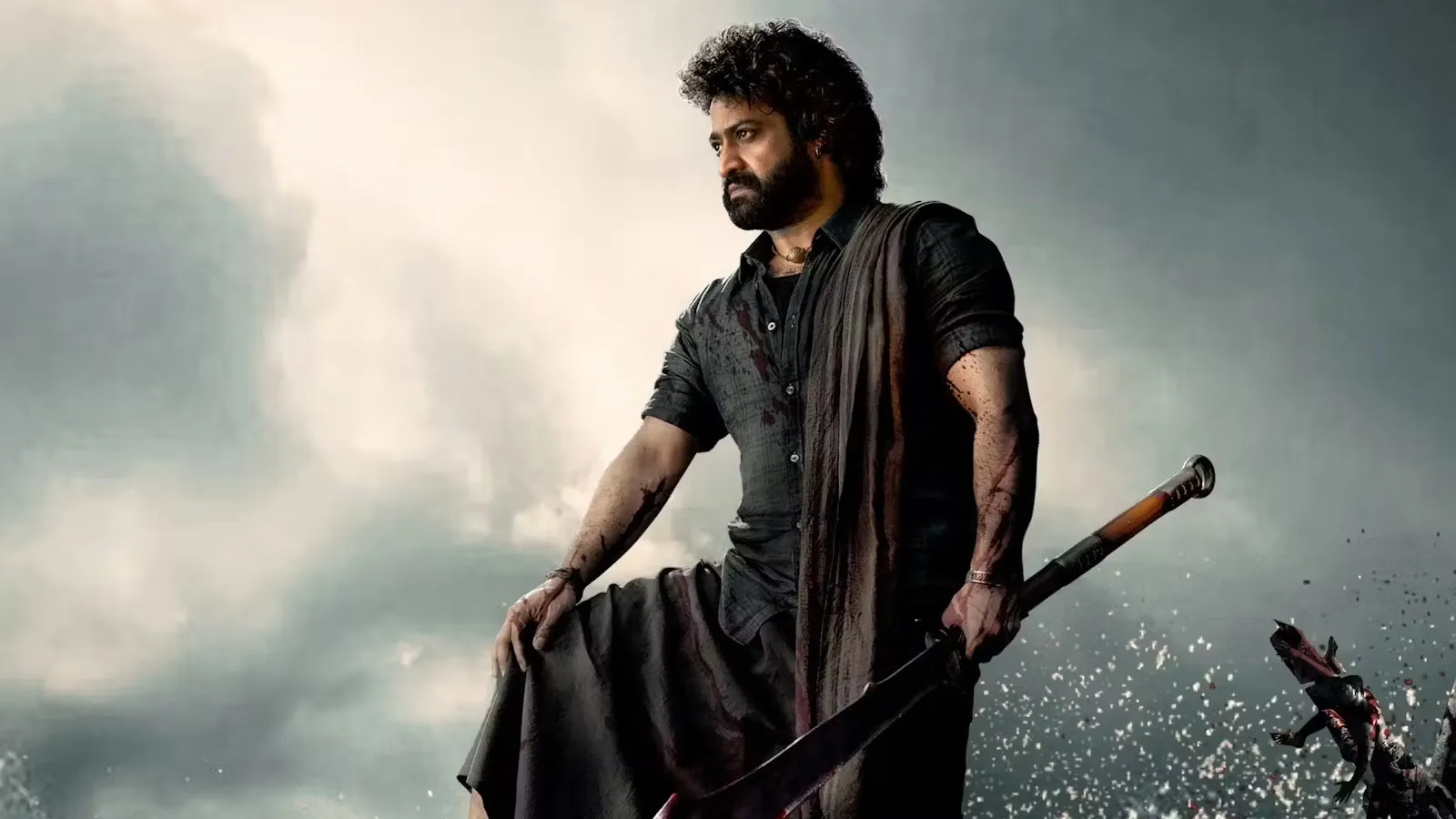

Movie
Horror Movie Metaphors
As a genre, Horror is arguably the most scoffed at for its gratuitous violence and gore. Not to mention the abject sexism of female sexuality being ultimately punished or having severe consequences. If you look beyond the cheap jump scares and corn syrup blood; horror (when done right) has the ability to be the most creative and thought-provoking lens in which to view the human experience. With the added suspension of belief, Horror has more scope to get creative with its messages and metaphors.
The creators may hint at their intentions with the movies but the majority of this discourse is fan theory and opinion.
Here are a few of my favorite metaphors in horror movies:

10: NOPE
Jordan Peele is a horror director known for exploring social issues in his movies. 2022’s NOPE may not have the obvious hints of sociopolitical commentary as his previous movies; Us (2019) and Get Out (2017). Yet NOPE still contains a culturally relevant metaphor many fans and film critics agree on. NOPE is generally considered to be a metaphor for fame. The siblings (played by Daniel Kaluuya and Keke Palmer) in the film even work on a ranch training horses for use in Hollywood films. The gargantuan alien entity in NOPE picks up its prey, such as humans and horses, and spits it what it can’t digest. Much like the way fame picks up aspiring performers; takes what is useful to it, spits out the rest then quickly moves on.
NOPE also heavily features the use of cameras and photographic imagery. In the world of NOPE you can’t stare at the alien or it will notice you then proceed to eat you. The film’s heroes cannot look directly at the monster. This could be likened to actors ‘spiking the lens’ or looking directly into a camera and breaking the fourth wall which is usually discouraged. Peele himself has remarked that NOPE’s central theme is exploitation, particularly the historical exploitation of people of color.
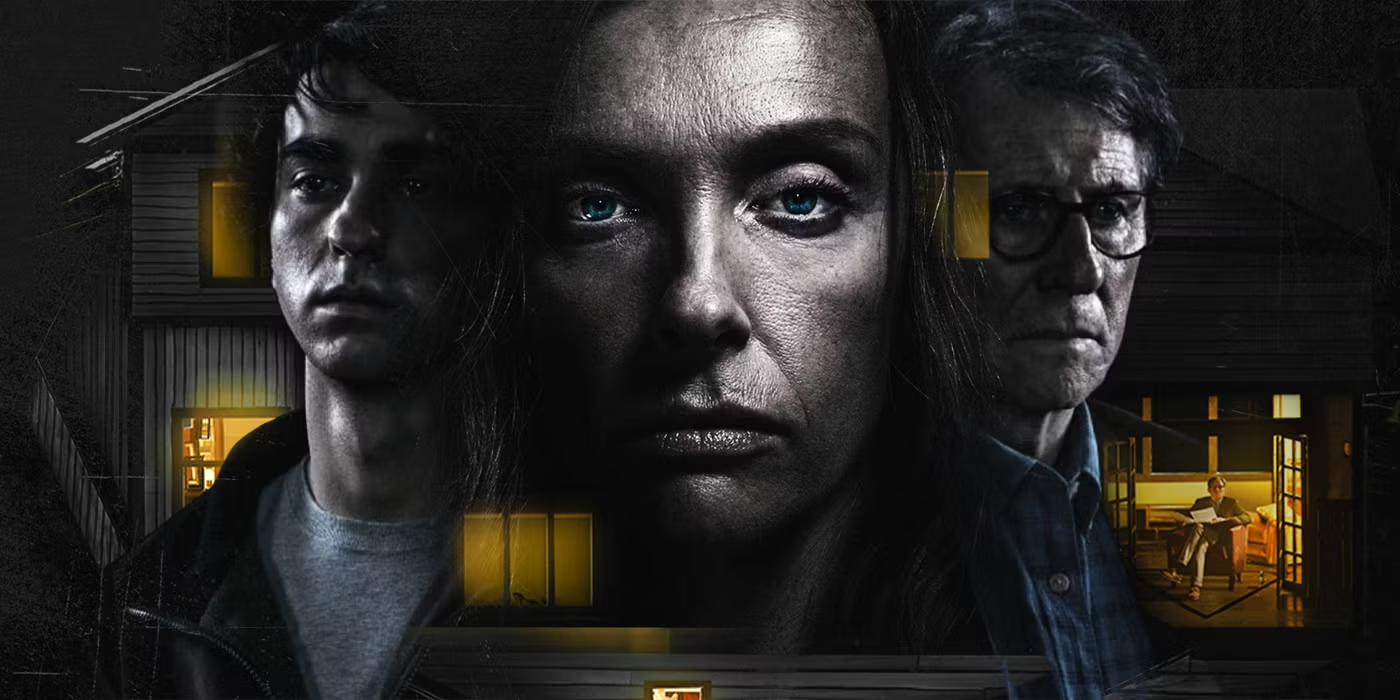
9: Hereditary
The clue is in the title. Ari Aster’s 2018 masterpiece is widely recognized as a metaphor for generational trauma. The machinations of Ellen, the grandmother of the family portrayed, effect not only her daughter Annie (played by Toni Collette) but her grandchildren too. The trauma is reimagined as Ellen’s worship of the demon king; Paimon. This worship has corrupted the family through the generations culminating in its absolute destruction.
The movie cleverly shows how our identities and fears are shaped by those who came before us.

8: SMILE
Much like Hereditary 2022’s SMILE reimagines demon possession as something that can be passed on from person to person. The demon in question symbolizes how the cycle of trauma continues following victims around like an evil faceless entity. Hurt people hurt people and they pass the entity (of abuse) on until it becomes a chain. In the narrative of the film, we are told that the unnerving smiles (which denote the presence of the demon) can appear on the faces of people you know, loved ones, or even strangers. Does this symbolize how anyone can cause you trauma? It has to be noted that the faces the demon wears when haunting the film’s protagonist Rose, are mainly the faces of her loved ones. It is a universally accepted fact that you are more likely to be attacked by a loved one than a stranger.
In psychological terms, trauma can only really be processed and ‘beaten’ when it is confronted and dealt with. SMILE mirrors this by having Rose take control and face her demons, both metaphorical and supernatural.

7: Candyman
Candyman is an extremely recognizable horror movie icon. The role was immortalized by Tony Todd in the 1992 original. In the 2021 reboot, Yahya Abdul-Mateen II takes up the mantle of Candyman and changes the trajectory of the franchise.
Candyman is a metaphor for extreme racism. The original Candyman was an artist by the name of Daniel Robitaille, who was mutilated and tortured to death for his relationship with a white woman. All the anger and hate that caused this atrocity manifested itself into the sinister supernatural killer.
Candyman in both original and reboot discusses gentrification and the ghettoization of predominantly black, low socioeconomic areas (Chicago’s Cabrini-Green). In 2021 Candyman, The Candyman is summoned to stop the gentrification of Cabrini-Green.
Candyman fans have criticised the reboot as it paints the Candyman as some kind of hero or dark knight when in the original he was the unquestionable villain. Although the original hinted at social issues the reboot has been accused of being too preachy and allowing the message to trump the story. There are many nods to current movements such as the 2021 protagonist Anthony creating an art show called ‘Say My Name’. This echoes one of the war cries of a modern movement; ‘Say Their Names’ for the victims of police brutality. Despite these discrepancies, Both versions are an allegory for how racism and racially motivated hate crimes echo throughout history to the modern day.

6:Rosemary’s Baby
1968’s Rosemary’s Baby has multiple interpretations but one of the most common is that the movie is a metaphor for misogyny and coercive control. Rosemary’s husband Guy Woodhouse wants to succeed in his acting career, and to do this he strikes a deal with his Satanist neighbors (as you do). Guy agrees to provide Rosemary as an incubator for the antichrist, unbeknownst to Rosemary. The married couple decide to have a baby and one night Rosemary is drugged by the satanic neighbours. With Rosemary incapacitated Guy and the neighbors summon Satan who rapes Rosemary and impregnates her with the antichrist.
The next morning Rosemary notices scratches on her back and Guy claims they got drunk and he had sex with her unconscious body (know it was the 60’s but my god!). Guy clearly sees Rosemary as an object and part of his property that he can ‘rent’ out. Rosemary is gaslighted by pretty much every character in the film. Her male doctor (also a member of the cult) even dismisses her fears when she confides in him. The doctor sends her back to her abusers. Reminiscent of women’s pain being dismissed by the medical community for centuries.

5:Drag Me to Hell
Sam Raimi’s 2009 film Drag Me to Hell has the most interesting fan interpretation. Many fans believe the film is a metaphor for eating disorders.
The film’s protagonist Christine (Alison Lohman) is a perfectionist and people pleaser which are personality traits known to be susceptible to eating disorders. The opening shot of the film has Christine looking longingly at desserts through a shop window with a pained expression on her face. At one point in the movie; a slice of cake develops an eyeball and stares at Christine.
Both vomit and Christine being vomited on is a big component of the film to the point of being beyond gratuitous. We also find out that Christine used to be a heavy child and had a traumatic childhood with her father dying and her mother succumbing to alcoholism, this type of upbringing is prime for developing an eating disorder. In the movie when Christine is upset she eats ice cream because she ‘doesn’t care anymore’ despite telling her boyfriend she is lactose intolerant.
In a broader sense, the film’s narrative has Christine being stalked by a demon wanting to (you guessed it) drag her to hell. Many sufferers reimagine their illness(s) as monsters or demons as a coping mechanism.
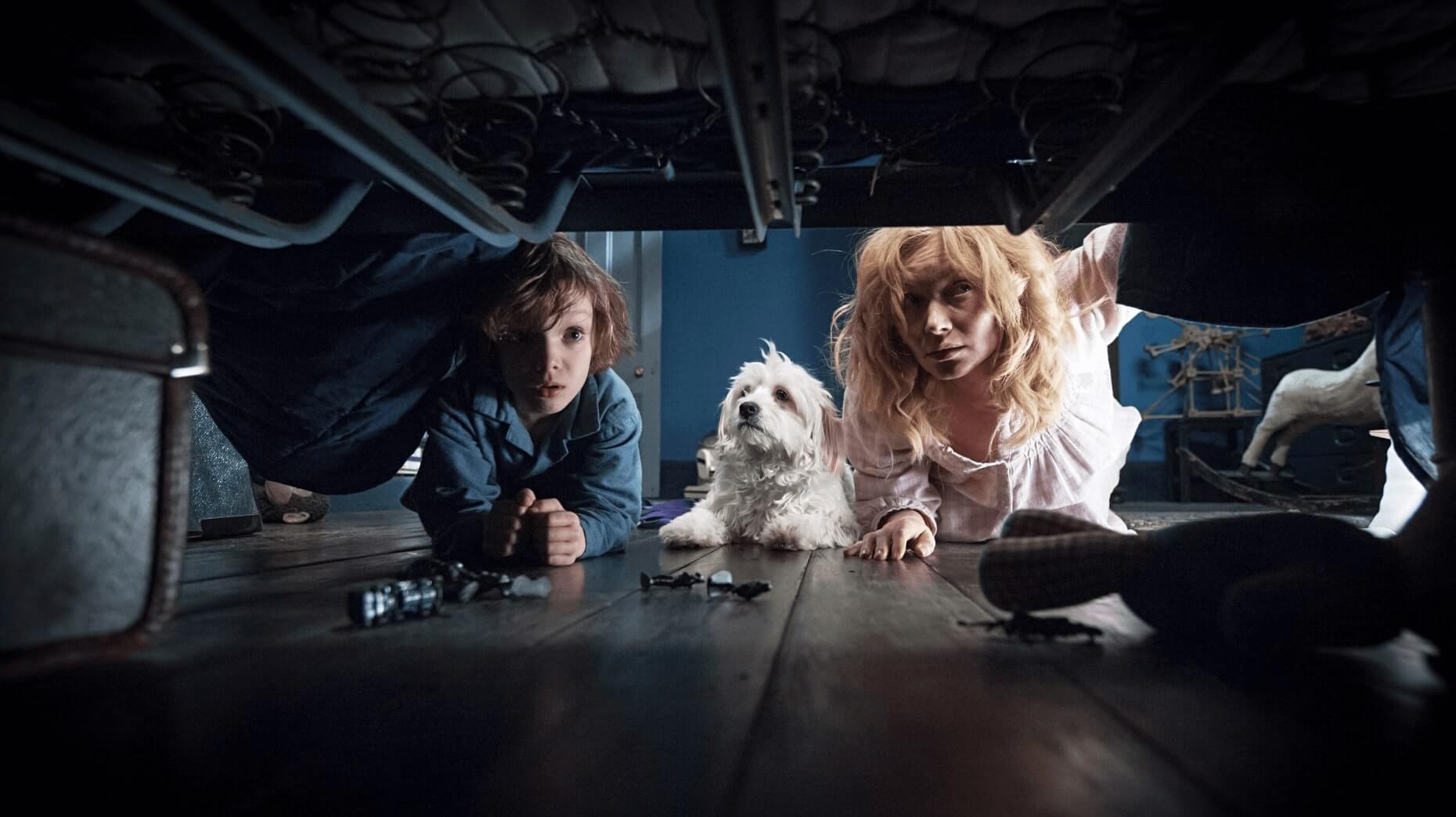
4: The Babadook
The Babadook (2016) monster is believed to be the representation of the mother Amelia (Essie Davis) grief and depression over the loss of her husband. The Babadook is a monstrous accumulation of all the negative feelings and memories Amelia has been repressing since her husband’s death. Her seven-year-old son asks her not to let Mister Babadook into the house and not let the bad feelings in. Ultimately the mother and son discover you can’t fully get rid of the Babadook (bad feelings, bad memories) so they lock him in their basement and feed the monster dirt and worms once a day. Worms and dirt can represent death and decay like Amelia is accepting the death of her husband. Amelia has also opened a literal can of worms by letting these feelings into their life. Grief and depression don’t just disappear, you need to acknowledge and accept them and sit with them even if it’s just once each day.
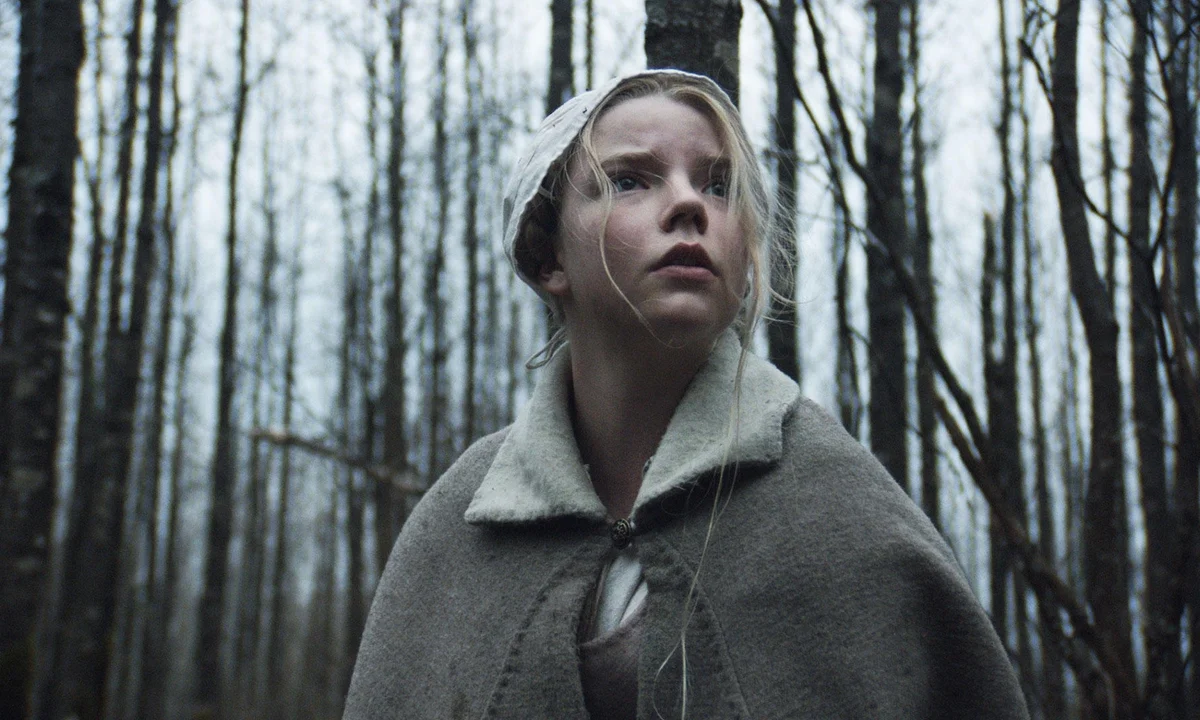
3: The Witch
Like Rosemary’s Baby, The Witch (2015) is open to many different interpretations. But the most common is the fear of female sexuality. New England Puritan society was the ultimate patriarchy. The Puritans believed women to be not only lesser but more susceptible to evil. The film’s protagonist Thomasin (Anya Taylor-Joy) grows up in this belief system. Thomasin’s age is not explicitly stated anything between 15 – 18. Old enough that her burgeoning sexuality would be considered a problem by her family. Her younger brother even lusts after her as he has never been in contact with other females. Thomasin is blamed for all the families ‘sins and problems to the point where her parents discuss selling her into servitude.
Puritan women could look forward to a life of household labor, childbirth, and being blamed for pretty much everything. During the Salem Witch Trials ‘witnesses’ attempted to use spectral evidence to condemn the women. Having dreams about the women coming into their bedrooms and trying to ‘tempt’ them. Which is basically just blaming the condemned women for their own sexually charged dreams and/or fantasies. Women essentially died because men fantasized about them. In The Witch the family’s sins are projected onto Thomasin the same way Puritan society projected their sins onto innocent women.
Thomasin is liberated from this life by Black Philip (Satan in disguise) and becomes a witch. Why when she is levitating in the woods she is laughing, now she can live deliciously.
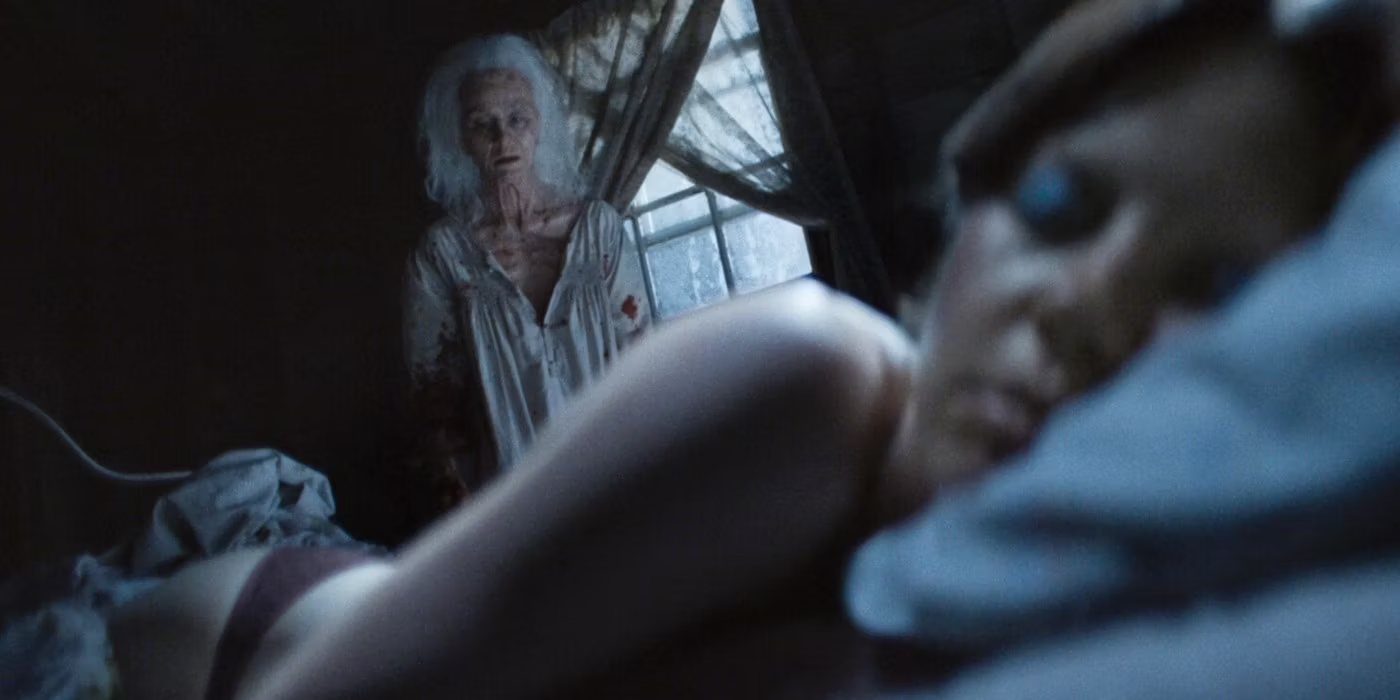
2: X
Ty West’s 2022 offering X could be a commentary on the fear of growing old, particularly women; losing their looks and perceived sexual power over men. The character of Pearl is jealous of Maxine’s youth, beauty, and freedom. When the two meet Pearl’s old and frail hand is seen longingly stroking Maxine’s bare back. The movie could also illustrate the struggle to combine your past and present selves. Both Pearl and Maxine are played by Mia Goth. In one scene Pearl is seen brushing her hair and doing her makeup similar to that of Maxine’s. Pearl even gets into bed with a sleeping Maxine.
The film also explores the loss of sexual virility and desire. It is fitting as Maxine and her group are trying to covertly film an X-rated movie on Pearl’s farm. Pearl and her elderly husband rectify this cognitive dissonance by having sex in Maxine’s bed with Maxine hiding underneath.
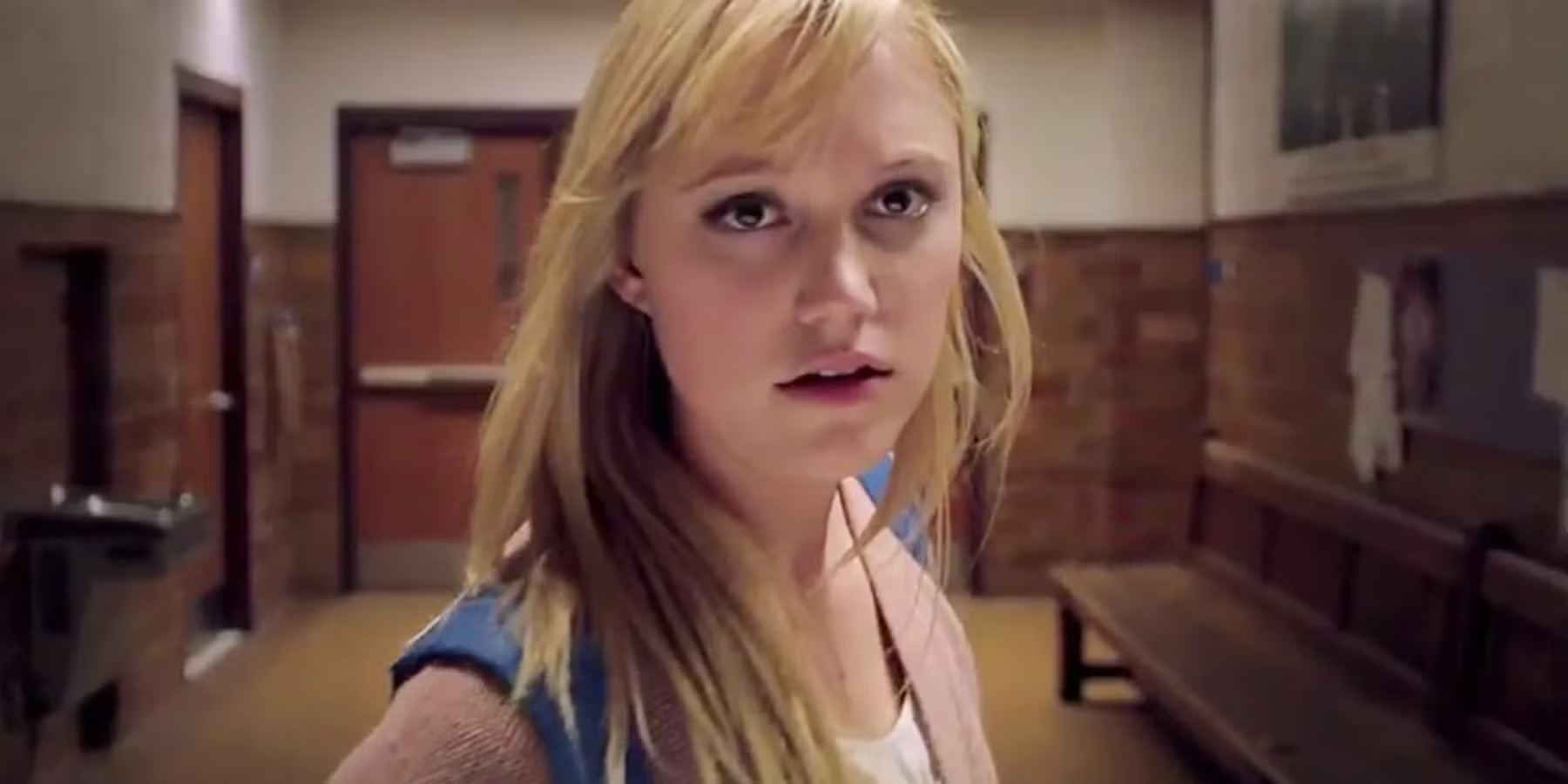
1:IT Follows
IT Follows (2015) is a fantastic subversive look into the meta world of a brilliant horror movie. IT Follows is so expertly nuanced that fans have been debating over its meaning. A sexually transmitted monster could be easily translated into multiple metaphors. Everything from an STD metaphor to rape culture, even a pandemic.
The metaphor I find the most compelling is the monster being a metaphor for death. It has to be said most horror movies are in some way a metaphor for death but IT Follows explores it in such a unique way. The young female protagonist Jay (Maika Monroe) has sex and inherits the monster from her partner. Sex does not open the door to self-actualization and adulthood as young people expect. Instead life becomes scary as you are stalked by a faceless monster. The young cast in the film are made aware of their own mortality and all they can is have sex and pass on the monster.
Like SMILE the monster borrows faces from strangers and the protagonist’s loved ones. There is no rhyme or reason to why and when the monster chooses which faces. Much like death, we try to make it logical but no one understands it. Ironically there is a French phrase ‘la petit mort’ meaning a little death or brief loss of consciousness during sex. In the movie having sex is the only thing that keeps the monster away however briefly. The world of IT Follows has no exact time period. There is a mix of past, present, and future technology and styles. This could represent the fact that Jay’s realization spans across human history.
Jay stares at screens, tries to eat, and spends time with her friends to try and distract herself from the slow trudging monster following her. She doesn’t know where and she doesn’t know when but it’s coming. Fans have commented that many of the casts conversations in the movie are very mundane and so unlike the manufactured conversations of movies. It’s argued this is a commentary on how we are all just sitting around waiting to die.
And on that cheerful note!
Movie
Wicked Soars As A Dazzling Spectacle
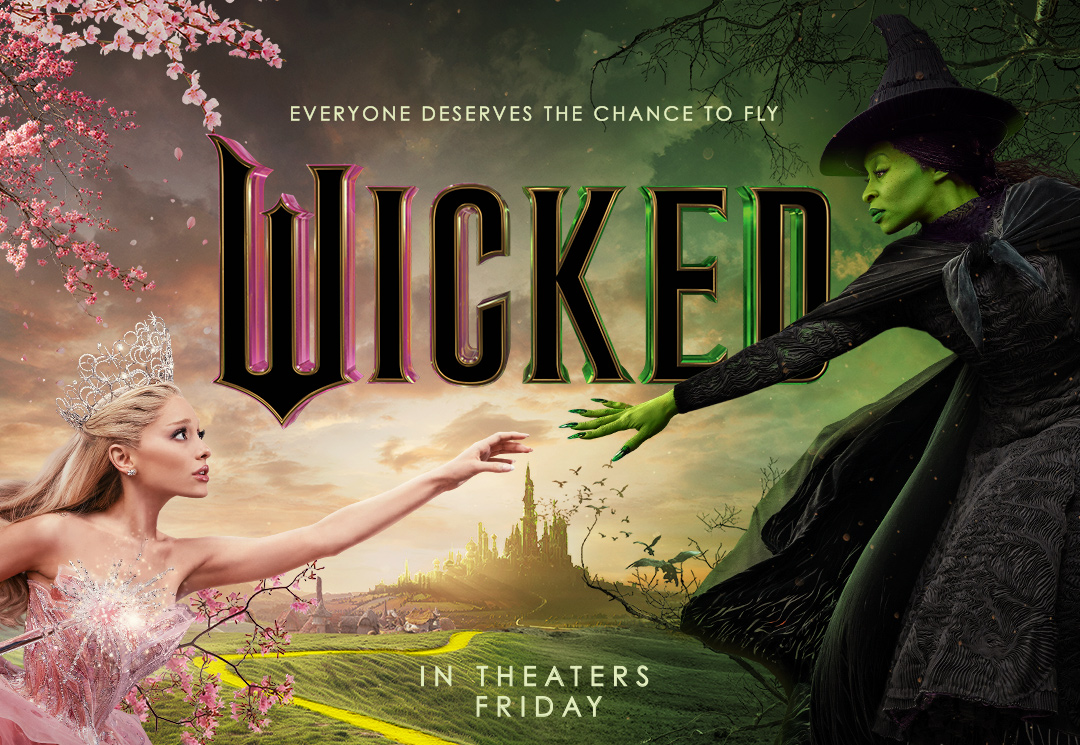
Jon M. Chu’s Wicked, the long-awaited cinematic adaptation of the Broadway musical, soars as a dazzling spectacle that captivates audiences with its lush visuals, heartfelt performances, and rich storytelling. The film, the first in a two-part series, delves into the origins of Elphaba and Glinda, exploring their unlikely friendship and the events that transform them into the Wicked Witch of the West and Glinda the Good.
Cynthia Erivo (Elphaba) and Ariana Grande (Glinda) lead the cast with exceptional performances. Erivo’s powerful vocals and nuanced portrayal of Elphaba’s internal struggles bring depth to the character. Grande, in her most notable film role to date, is both hilarious and heartfelt as Glinda, perfectly capturing her charm and comedic timing. Supporting performances by Jonathan Bailey (Fiyero), Michelle Yeoh (Madame Morrible), and Jeff Goldblum (the Wizard) add layers to the narrative, enriching the world of Oz with compelling subplots.
Chu, known for his work on Crazy Rich Asians and In the Heights, brings his signature style to Wicked, blending vibrant visuals with emotional resonance. The production design by Nathan Crowley is stunning, vividly rendering Oz with grandeur, from the Emerald City to Shiz University. Paul Tazewell’s costume design is equally striking, updating the Broadway look with cinematic flair. The score, by Stephen Schwartz and John Powell, retains iconic musical numbers like “Defying Gravity” while incorporating new arrangements that heighten their cinematic impact.
Critics have hailed Wicked as one of the best musical-to-film adaptations in decades, rivaling Chicago and Mamma Mia. Chu’s decision to split the adaptation into two parts allows for a deeper exploration of the story, giving audiences time to connect with the characters and their journeys. Fans of the Broadway show will appreciate its faithfulness to the source material, while newcomers will be enchanted by its universal themes of acceptance, ambition, and friendship.
With Wicked, Jon M. Chu has delivered a masterpiece that sets a new standard for musical adaptations. The film is a visual and emotional triumph, showcasing unforgettable performances and a meticulously crafted world. Whether you’re a fan of the original musical or new to the story, Wicked is a must-see cinematic event.
Rating: 3.5/5
Movie
Red One – A fresh new action packed point of view on a classic holiday story
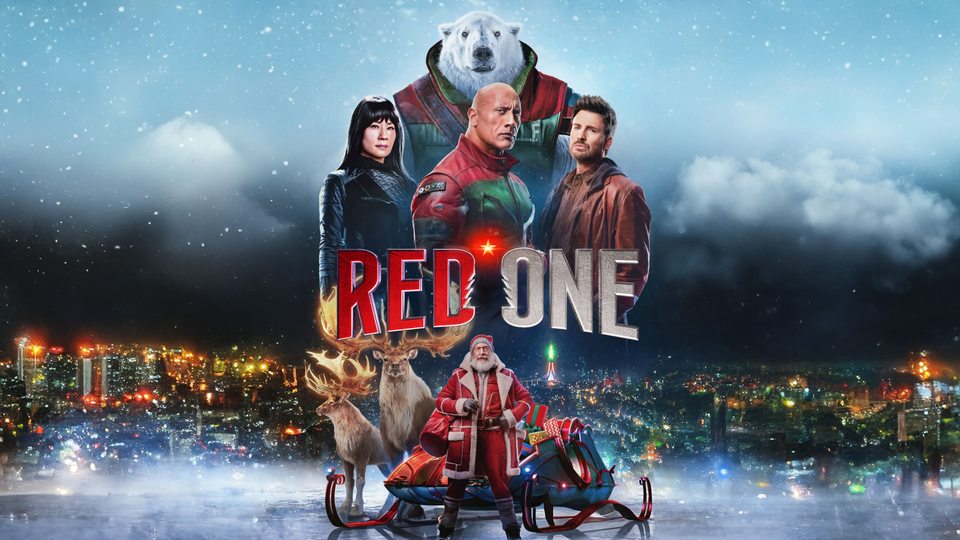
Genre: Action, Comedy, Holiday Adventure
Director: Jake Kasdan
Starring: Chris Evans, Dwayne “The Rock” Johnson, J.K. Simmons, Lucy Liu
Rating: 4/5
“Where to start with Red One? From the rich folklore and wild imagination to the clever reimagining of classic mythology, this movie is packed with surprises.
First, it’s a fresh take on the Santa myth, blending humor, emotion, and action in unexpected ways. This isn’t your typical Santa—gone is the jolly old man squeezing down chimneys. Instead, J.K. Simmons gives us a buff, tech-savvy Santa, equipped with gadgets that let him shrink, grow, and bring objects into reality at will. He’s a Santa ready to take on Christmas with style, and I’m here for it!
Now, on to Dwayne Johnson. I’ll admit, I’ve been a bit weary of seeing “The Rock” play his usual invincible hero persona. But here, paired with Chris Evans, the chemistry is electric and refreshingly different. They’re equals, riffing off each other’s quirks and bringing out a new side in each other. Evans’ character’s sense of humor clicked with me, I would have chosen the Harley Quinn action figure!
Then there’s Lucy Liu, who brings her usual elegance and strength to the screen, kicking butt with style—she’s a standout in every scene. And Kiernan Shipka shines as the antagonist, stepping into her first major movie villain role with confidence and skill. She’s come a long way since Sabrina, and she clearly has serious range.
Red One gets a solid 4 out of 5 from me. It’s a family-friendly adventure with just enough twists to keep it fresh. For anyone looking to see a familiar story told in a new way, this one’s worth the watch.”
Movie
Is This the Scariest Movie Ever?
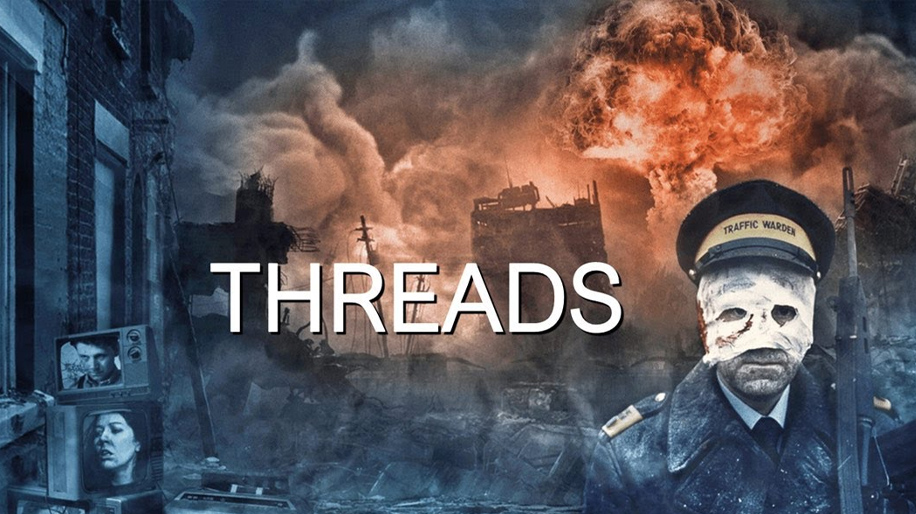
It’s been called the scariest movie ever. Or the grimmest, bleakest, and most brutal. The post-apocalyptic drama; Threads, has only been aired three times, its premiere in 1984 (appropriate year), 1985, and 2024 for its 40th anniversary. Threads has also been made available on streaming services. The anniversary has stirred up memories from its initial release which has been dubbed ‘the night Britain did not sleep!’
Threads is a BBC-produced TV movie which explores what would happen if a nuclear bomb was dropped on the English city of Sheffield.
The film is structured like a documentary; with a voiceover speaking to the audience in a clipped, received pronunciation BBC English. The narrator speaks over what is possibly stock footage of a spider weaving its web, or its threads. The narrator explains how in urban society everything connects and how we all rely on one another’s skills to survive. Ominously the narrator points out how fragile these threads are.
THREAD 1 – FAMILY
The film then cuts to our two leads Ruth (Karen Meagher) and Jimmy (Reece Dinsdale). These two young lovebirds are in a car over looking the Sheffield countryside. A fighter jet flies overhead as Ruth remarks how “peaceful” it is. We follow Ruth Beckett and Jimmy Kemp as they navigate an unplanned pregnancy.
The film plays like a ‘kitchen sink drama’. I have heard ‘kitchen sink’ described as an ‘anti-Hollywood’ where everyone has their natural teeth and skin texture. The film looks similar to a British soap opera.
Whilst the narrative at this point just skirts around somewhat boring, it is clear something is playing out globally in the background. We see it on newspaper covers and hear snippets on radios and TVs. There is a situation unfolding in the Middle East with tensions building between the Soviets and the USA. Troops are mobilized and more importantly, nuclear warheads are moved.
And then it happens.
THREAD 2- SECURITY
At almost 50 minutes in, the bomb finally drops. The literal bomb that is. The omnipresent narrator tells us it is 8.30 am in the UK meaning it is 3.30 am in Washington DC; Western response will be at its slowest.
The bomb scene is incredibly powerful. This is where the ‘kitchen sink’ realism really comes into its own. It looks like any other British high street but people are running around screaming looking for shelter amidst the blaring siren. Children are being scooped up from their prams and the panic is palpable. Infamously one businesswoman is staring up at the blooming mushroom cloud rising above the city, the camera pans to see urine running down her trouser leg and pooling at her 80’s white heels.
There is constant screaming as buildings explode, windows smash, and curtains catch fire.
Text informs us that 210 megatons in total fell on the UK with an estimated 2.5 – 9 million casualties.
THREAD 3 – SOCIETY
Ruth exits her parents’ destroyed house to look for Jimmy. In her old neighborhood she is greeted by a horrendous sight. The whole street looks like that of The Blitz; with dead pets and both parents and children looking for each other. A shell-shocked woman covered in ash asks Ruth; “have you seen our Mandy?” she is proffering what looks to be a child’s coat, as if Mandy forgot her coat when going outside to play. A charred corpse with perfect white intact teeth (probably dentures) is embedded into a building. A staring woman is clutching the burnt remains of her infant.
After this, the horrific scenes come thick and fast.
Food has become the new currency and food stores are protected by force. It is here we see the figure who has haunted many viewers nightmares. The armed traffic warden with the bandaged face. Played by an extra who actually was a traffic warden in real life!
Hospitals are overrun with the injured. The harried staff are using sheets as bandages and table salt to disinfect contaminated water. Doctors resorting to amputation with no anesthetic.
THREAD 4 – CHILDREN
Ruth gives birth to a healthy child. A little girl named Jane. Ruth gives birth alone in a barn and has to bite through the umbilical cord. Later, on Christmas Day no less, a group of survivors gathers around a fire in the barn looking like a macabre nativity scene.
But what sort of world has Ruth brought her daughter into? We are told it is ten years later and society has returned to medieval times with the nuclear winter and UV damage affecting the crops. Jane does not call Ruth ‘mum’ only ‘Ruth’ and has no reaction when Ruth finally dies. Are the people in this society so profoundly broken by the sheer amount of loss and trauma that they can no longer form familial bonds? Has that thread been cut?
There is clearly little regard for human life anymore. Jane walks past three corpses hanging in the foreground paying them no attention. Is this a mass suicide or an execution? The corpses are also bare. Have people stolen their clothes to protect themselves from the harsh nuclear winter? Images such as these, shown for mere seconds can tell you so much about the situation.
THREAD 5 – LANGUAGE
In the second half of the film, there is barely any dialogue. Any words spoken by Jane and her peers are some strange form of pidgin English. Many fans have argued that language would not degrade that quickly. However, these children have been brought up by deeply traumatized parents (if they had parents at all). People barely speak anymore and death and disease are extremely common. Is it any surprise that mankind has been brought down to its most basic level? Or is this the cognitive effects of growing up around high levels of radiation?
Many fans comment how Threads gives no hope. But there appears to be a rudimentary school system-cum-workhouse with Jane and her peers watching an old educational video. Although the last scene definitely takes away from the tepid hope we are shown.
SO IS IT SCARY?
Well….as I had heard about the film through cultural osmosis I knew what to expect. I appreciate that during the 80’s, living in the fog of the Cold War, a nuclear holocaust was looking more and more likely. Having a film at that time showing exactly what it would look like if it were to happen in a typical British city would be horrifying.
With the film being set up as a documentary speaking to some unknown in the future, it is interesting when you are watching from the future. Before COVID I would think it was so unrealistic; the way a lot of people didn’t take the crisis seriously until they were practically underneath the bomb. Now I know differently. Everything is fine until it’s not and we don’t tend to tackle a crisis until it is right on our doorstep. Like Mr Kemp with his trousers down on the loo as the bomb went off, we are so ill-prepared. And all the systems (or threads) in place that you thought would protect you, such as the government, are just ill-equipped.
It is an extremely well-done film especially when I learned the budget was £400,000 (about 1.2 million today). The acting is superb and I can see why it’s such an iconic film. In today’s current climate Threads is more relevant than ever. Would highly recommend it.
Five Stars.


